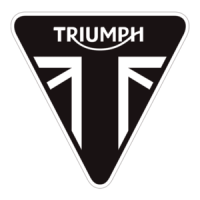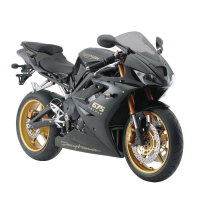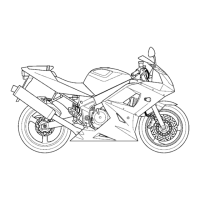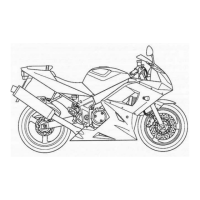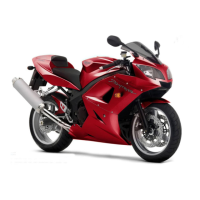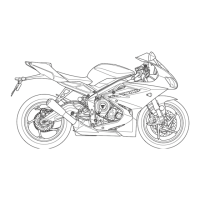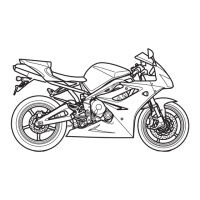6 CRANKSHAFT/RODS/PISTONS
TiUJMPU
CRANKSHAFT MAIN BEARING/JOURNAL WEAR
Main Bearing Selection Chart (all dimensions in mm's)
Shell Colour
White
Red
Red
Blue
Blue
Green
Crankcase Bore
41.126
41.118
41.126
41.118
41.135
41.127
41.135
41.127
41.144
41.136
41.144
41.136
Journal Dia'
37.976
37.969
37.968
37.960
37.976
37.969
37.968
37.960
37.976
37.969
37.968
37.960
Running
Clearance
All types
0.044 - 0.020
Minor differences in crankshaft dimensions are
crankshaft cannot be reground and no oversize
compensated for by using selective bearings. For further
bearings are available.
information on bearing part number to colour
Select bearings as follows:
cross-references, see the latest parts microfiche.
1.
Measure the bearing to crankshaft main journal
clearance using plastigauge (Triumph part
number 3880150-T0301). Use the method
described in connecting rod clearance
measurement.
Checking crankpin clearance using plastigauge
Crankshaft main bearing/journal clearance
Standard:
0.020 - 0.044 mm
Service limit:
0.08 mm max.
2.
If the clearance exceeds the service limit,
measure the diameter of the crankshaft main
journal.
Crankshaft main journal diameter
Standard:
37.960 - 37.976 mm
Service limit:
37.936 mm
NOTE:
•
If any journal has worn beyond the service limit,
the crankshaft must be replaced. Due to the
techniques used during manufacture, the
1. Measure and record the diameter of each
crankshaft main bearing journal.
2. Measure and record each main bearing bore
diameter in the crankcase (bearings removed).
Compare the data found with the chart above to select
bearings individually by journal.
For example:
Crankshaft Journal diameter
37.972 mm
Crankcase Bore
41.130 mm
Bearing Required
RED
NOTE:
•
It is normal for the bearings selected to differ
from one journal to another.
CAUTION: Always confirm, using the
•
plastigauge method, that the running
clearance is correct before final assembly. Severe
engine damage could result from incorrect
clearance.
Crankshaft End Float
Standard
0.05 - 0.20 mm
Service Limit
0.4 mm max
NOTE:
•
Crankshaft end float is controlled by the
tolerances in crankshaft and crankcase
machining. No thrust washers are used. If
crankshaft end float is outside the specified
li
mit, the crankshaft and/or the crankcases
must be replaced.
6.18
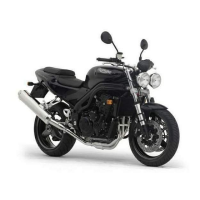
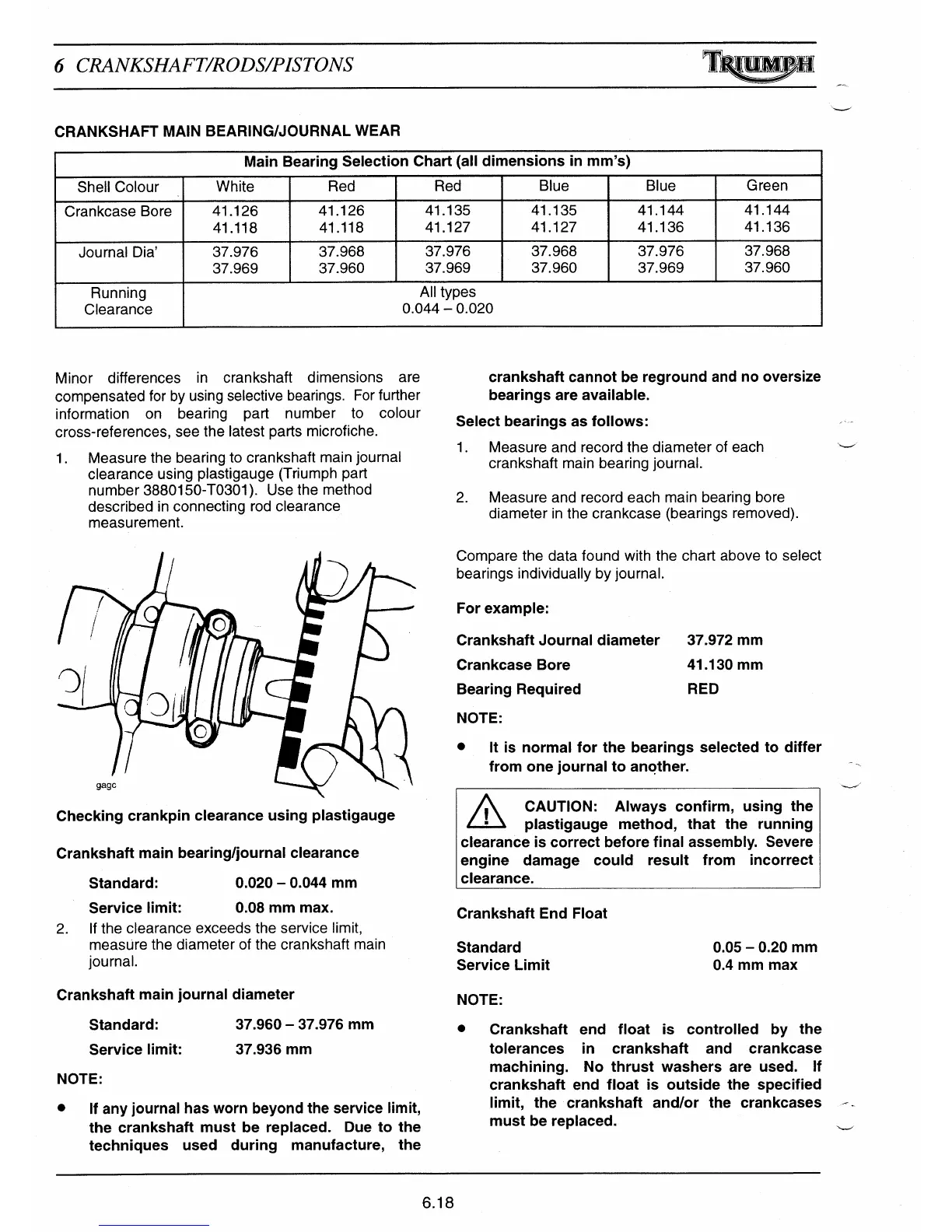